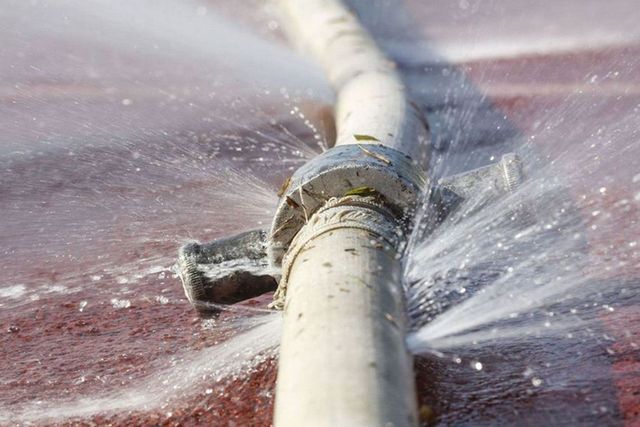Stopping Burst Pipes: Vital Tips to Secure Your Pipes
Protecting against ruptured pipelines is a critical issue for homeowners, especially during cooler months when the danger of cold is heightened. Implementing critical measures such as correct insulation, routine examinations, and maintaining constant indoor temperatures can substantially lower the possibility of pipe failing.
Understand Pipe Vulnerabilities
Recognizing pipe susceptabilities is crucial for efficient plumbing upkeep and preventing expensive damages. Several elements add to the sensitivity of pipes to bursts, consisting of product make-up, age, and environmental conditions. Older pipelines, especially those made from galvanized steel or polybutylene, frequently weaken in time, resulting in raised risk of leaks and ruptures.
Temperature fluctuations can likewise considerably effect pipe integrity. In chillier environments, water entraped in pipelines can freeze, increasing and exerting stress on the pipeline wall surfaces, which might eventually result in a burst. High water stress can strain pipelines, especially at bends and joints, increasing the chance of failing.

Insulate Piping Appropriately
Correct insulation of pipelines is important for stopping freezing and subsequent ruptureds during winter (burst pipe). Shielding your plumbing system effectively safeguards versus temperature level goes down that can cause costly damage. Begin by identifying prone locations where pipes are revealed to outdoor temperature levels, such as cellars, attics, and outside walls
Use foam pipe insulation sleeves or cover insulation tape around these areas to offer a safety obstacle. Ensure that all sections of the pipelines, especially those with restricted warm direct exposure, get appropriate insulation. Pay unique interest to fittings and joints, as these are more prone to freezing.
When insulating, it's important to choose materials that fulfill neighborhood building regulations and are proper for the details environment. Fiberglass insulation is commonly recommended for its thermal resistance buildings. In addition, take into consideration making use of warm cables or tape in severe conditions, which can be connected in to supply supplemental warm
On a regular basis examine insulated pipelines for any indicators of wear or damages, as endangered insulation can reduce its effectiveness. By taking these aggressive procedures, you substantially decrease the danger of pipe bursts, making sure a reliable plumbing system throughout the winter season months.
Maintain Constant Temperature Level
A secure interior temperature level is crucial for stopping ruptured pipes during the freezing months. When temperatures decline, water within pipelines can freeze, increasing and producing pressure that may inevitably cause the pipelines to burst. To alleviate this danger, house owners need to preserve a regular temperature throughout their home, preferably no reduced than 55 ° F(13 ° C)Making use of a programmable thermostat can help take care of indoor temperatures successfully, making certain that rooms with pipes continue to be warm even when your home is vacant. Pay special focus to areas that are extra prone to cool, such as cellars, garages, and attics. Maintaining cupboard doors open under sinks can additionally allow warmer air from the home to circulate around pipes.
This small flow of water can stop freezing by minimizing stress within the pipelines. By applying these methods, house owners can substantially lower the risk of pipe ruptureds and safeguard their pipes systems against the harsh winter season aspects.
Routinely Evaluate Pipes
Regular inspections of pipes systems are crucial for avoiding burst pipes and preserving total home integrity. During these inspections, it is important to check out visible pipes for indications of rust, leaks, or put on.
In addition, evaluating connections and joints is essential, as these factors are typically prone to leaks. Property owners need to likewise analyze water pressure degrees, as extreme pressure can strain the pipes system and boost the risk of pipeline ruptureds.
Consider scheduling specialist pipes examinations at least annually, particularly before wintertime, to guarantee your system is planned for cooler temperature levels. Regular examinations not just aid in determining immediate issues however likewise foster long-term maintenance approaches that can enhance the lifespan of your pipes system. By being proactive in your approach, you can secure your home versus the costly and disruptive repercussions of burst pipes. Prioritizing pipes evaluations is an investment in your home's health and wellness.
Know Emergency Treatments
Recognizing emergency situation treatments is essential for every property owner, specifically after performing regular pipes assessments. Being prepared for a pipes emergency visit site situation can substantially alleviate damage and save prices.
Following, maintain essential devices convenient. A plumbing emergency package should include a wrench, plunger, and towels, along with a flashlight and a container for tiny leakages. Additionally, think about having the call information for a relied on plumber conveniently offered, should the circumstance rise beyond your control.
If you detect a leak or ruptured pipeline, instantly turn off the supply of water and alert your plumbing professional. Furthermore, record the damages with photos for insurance objectives. burst pipe. Be mindful of the indicators of possible pipes concerns, such as uncommon water pressure changes or damp places on walls
Eventually, proactive understanding and speedy activity are vital in taking care of pipes emergencies, guaranteeing your home remains secured and minimizing prospective damage.

Final Thought
In final thought, protecting against burst pipelines demands a complex method that consists of understanding pipe susceptabilities, correct insulation, maintaining consistent indoor temperatures, regular inspections, and knowledge of emergency treatments. By implementing these vital methods, the danger of pipes failings can be significantly reduced, thereby making certain the durability and efficiency of the plumbing system. Proactive steps not only guard versus prospective damage but likewise add to overall water conservation and the security of property.
In cooler environments, water entraped official website in pipes can freeze, putting in and expanding stress on the pipeline walls, which might inevitably lead to a burst. When temperature levels drop, water within pipelines can freeze, expanding and developing stress that may inevitably create the pipelines to burst. By applying these methods, home owners can substantially decrease the risk of pipe ruptureds and secure their pipes systems versus the severe winter season elements.
